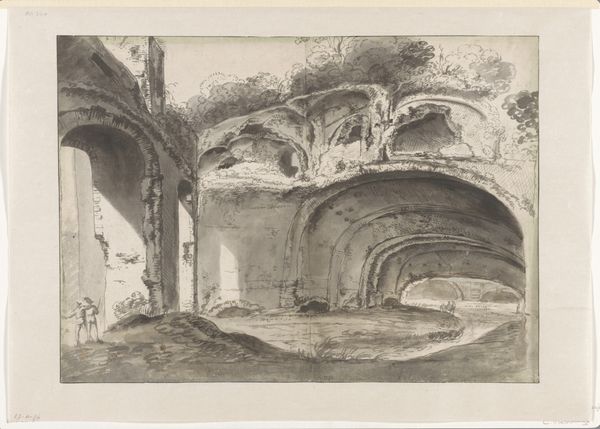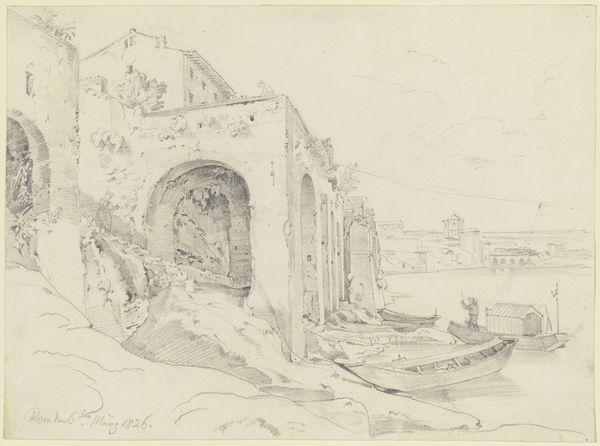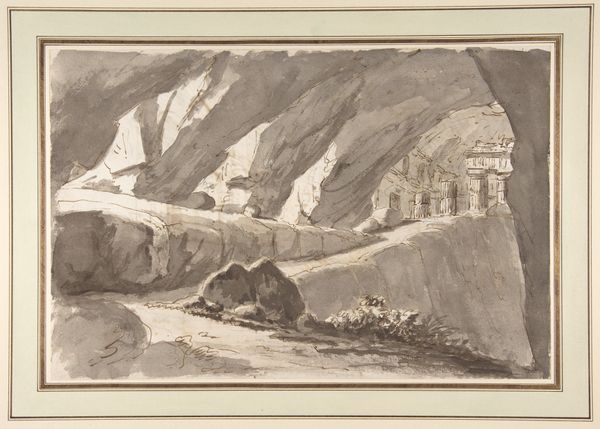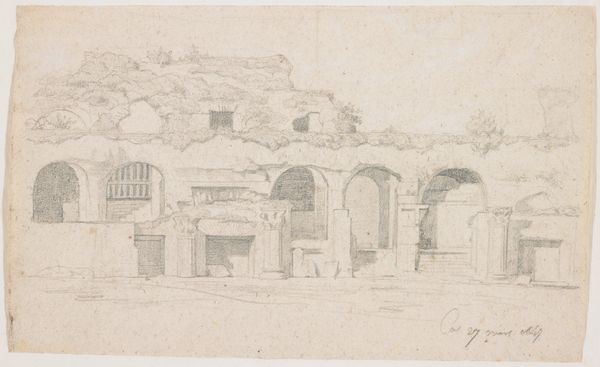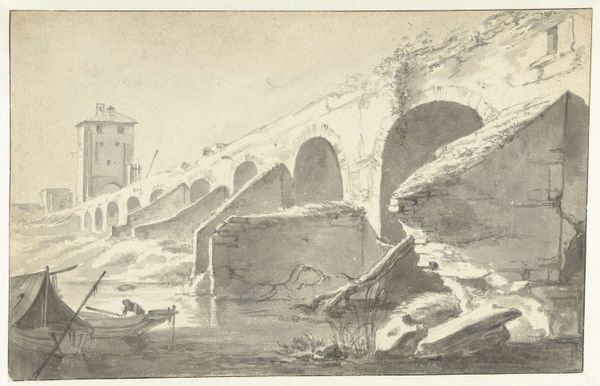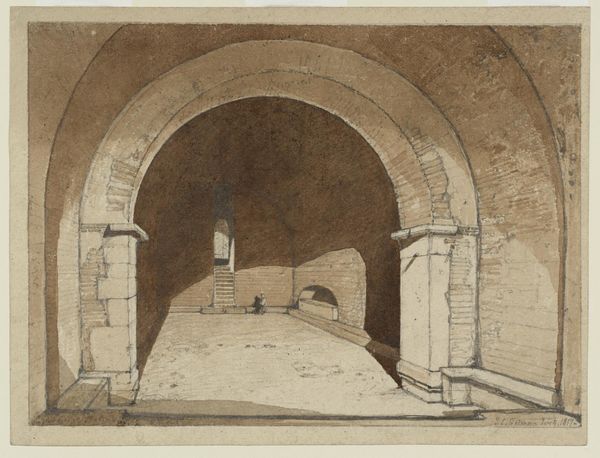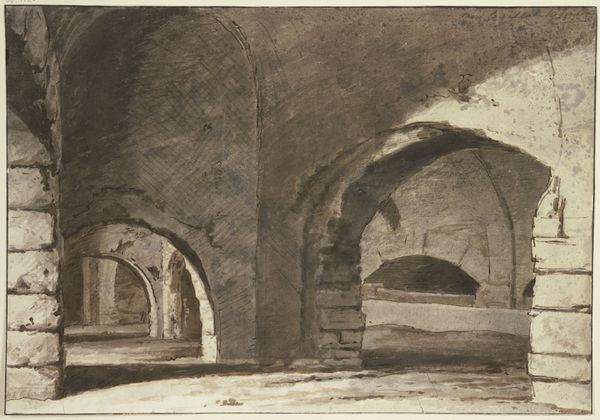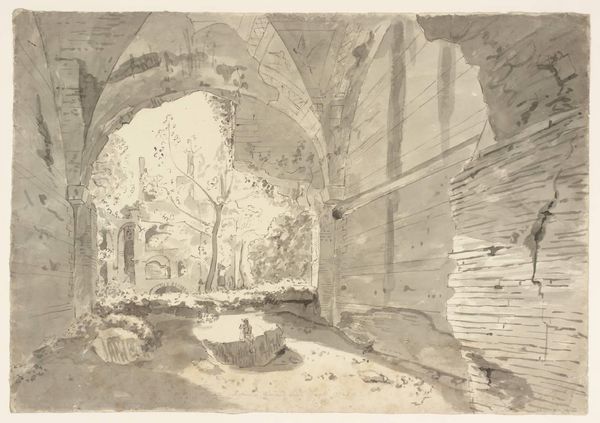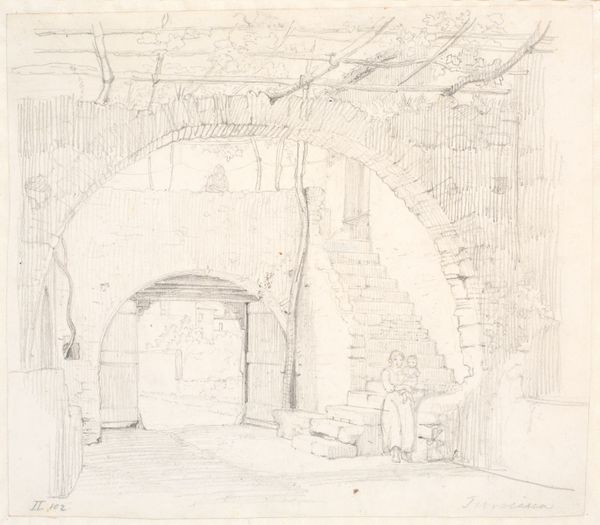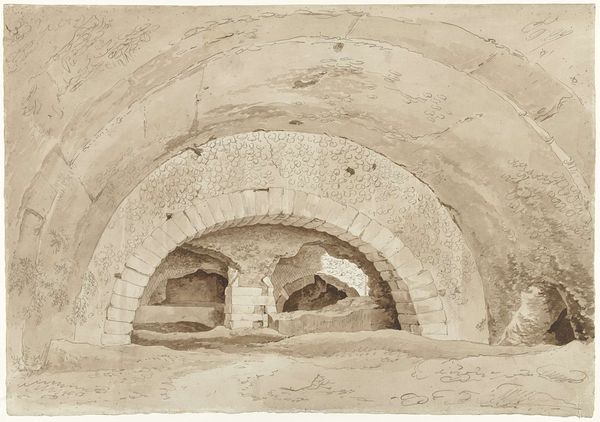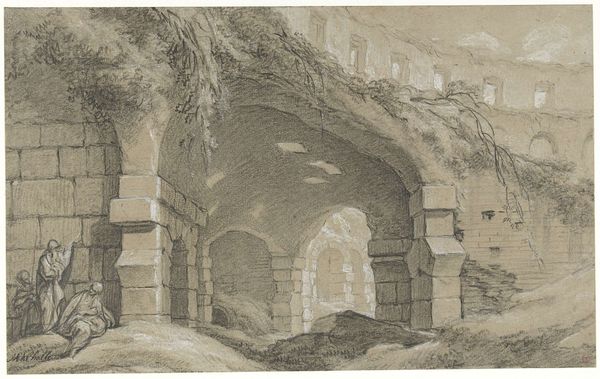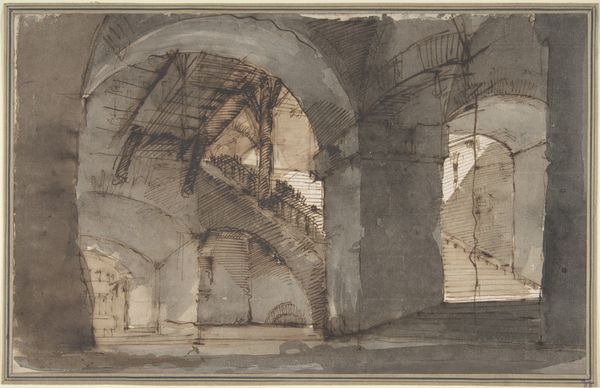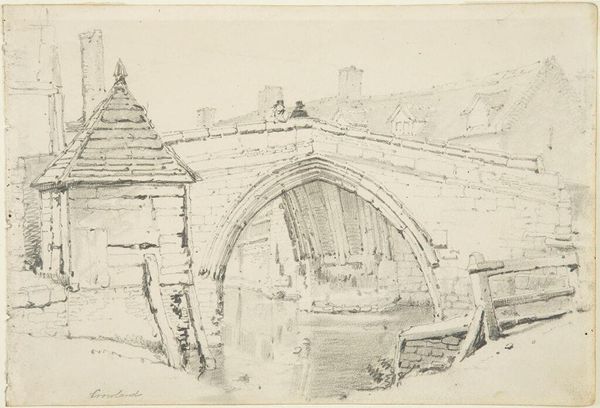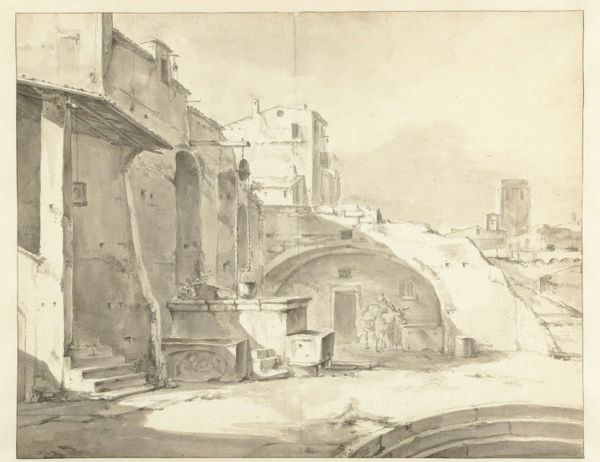
Caverns Excavated in the Rock within the Castle of Chateau Gaillard, near Andelys, Normandy 1822
0:00
0:00
drawing, painting, watercolor
#
drawing
#
painting
#
landscape
#
watercolor
#
romanticism
#
watercolor
Copyright: Public Domain: Artvee
Curator: Looking at John Sell Cotman’s "Caverns Excavated in the Rock within the Castle of Chateau Gaillard, near Andelys, Normandy," created in 1822, what strikes you initially? Editor: The muted tones immediately set a somber mood. The arches receding into shadow give a sense of oppressive depth. I'm wondering about its former use – it feels both architectural and vaguely imprisoning. Curator: Indeed. Cotman rendered this work in watercolor. The relatively simple act of painting hides how laborious carving these caverns from stone would be, with significant implications for understanding material practice and economic structure. The construction of something so enduring from the earth and labor… Editor: Yes, and considering that Chateau Gaillard was commissioned by Richard the Lionheart in the 12th century, this drawing reminds us of the feudal power structures that shaped landscape and society for centuries. The image invites thoughts about access to resources and spaces throughout history. It also speaks to ideas around safety and conflict – the reason these fortifications were necessary. Curator: That intersection of the romantic aesthetic and practical realities fascinates me. How the visual rendering obscures a labor and history is important to my consideration of this work. Notice Cotman's style here, as well: we see an attention to the planes of the walls, and light reflecting and creating geometric form... a far more nuanced operation than one would expect looking at this at first glance. Editor: It also prompts considering questions around access—how did Cotman come to see and then depict the castle’s caverns in 1822, and why? The watercolor itself serves as a historical document of a certain privileged perspective during the post-Napoleonic era, too. It's fascinating to consider. Curator: Precisely. For me, understanding what went into its making enhances my appreciation for the artistry here. By foregrounding this information, Cotman is revealed as participating within these dynamics—rendering this in watercolor, bringing it from private sphere to something circulating to collectors and eventually our collection. Editor: Thinking about it this way, these romantic landscapes become political records. Curator: I completely agree; looking at process helps connect disparate moments across history. Editor: Definitely something to ponder further.
Comments
No comments
Be the first to comment and join the conversation on the ultimate creative platform.
